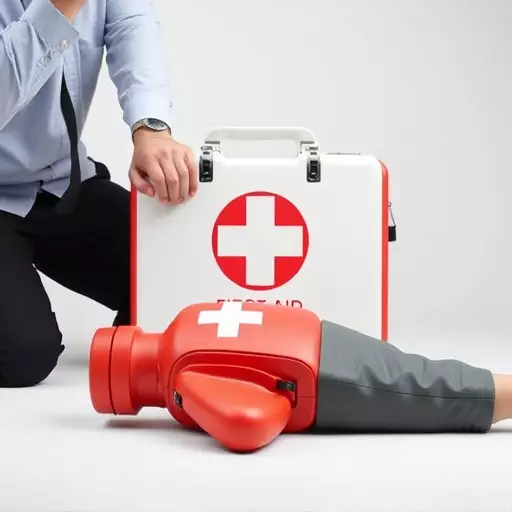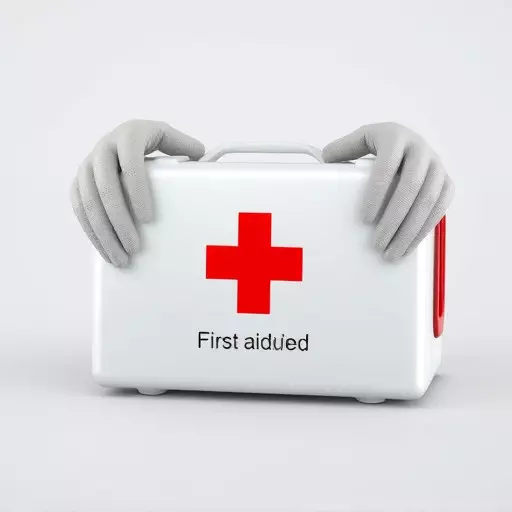Choking emergencies require swift action, making first aid and CPR training essential. Recognizing signs like coughing or distress is crucial. Basic Life Support (BLS) training teaches techniques to maintain oxygen flow until help arrives, with specific steps for adults and children. Regular renewal of certification ensures updated skills vital for saving lives in emergency situations. Jobs often mandate this training, available through various courses leading to first aid certification.
Choking emergencies can be terrifying, but understanding how to respond can save lives. This comprehensive guide delves into the critical aspects of managing choking situations. We explore recognizing signs of choking, basic first aid steps, the integral role of CPR, and the importance of basic life support training. Learn about first aid certification requirements and gain practical tips for effective preparation and response. Empower yourself with the knowledge to make a difference in emergency scenarios.
- Understanding Choking Emergencies: Recognizing the Signs
- Basic First Aid Steps for Choking
- The Role of CPR in Choking Situations
- Basic Life Support Training: What You Need to Know
- First Aid Certification Requirements and Options
- Practicing and Preparing: Tips for Effective Response
Understanding Choking Emergencies: Recognizing the Signs

Choking emergencies are time-sensitive medical situations that require immediate action to prevent severe consequences, even potential death. Understanding how to recognize a choking emergency is crucial for anyone with basic life support training and first aid certification. Signs of choking may include coughing, gasping for air, difficulty speaking, or becoming red and distressed.
The most common causes of choking are food-related, particularly when someone swallows something too large or gets food caught in the throat. Other objects like toys, jewelry, or small household items can also cause choking, especially among children. Having first aid and CPR training equips individuals to respond effectively during such emergencies, making it a vital component of any comprehensive first aid certification requirements.
Basic First Aid Steps for Choking

In a choking emergency, every second counts. Basic First Aid and CPR Training can equip individuals to handle such situations effectively until professional help arrives. The initial steps focus on preventing panic and clearing the airway. Lean the person forward slightly, supporting their back with one hand while gently tapping their back with the other. This helps promote coughing or dislodge the blockage.
For adults, perform up to five abdominal thrusts (heave) between the ribs just below the breastbone. For children, use a gentler approach, aiming for half the force of an adult. If the person doesn’t cough up the obstruction after these attempts, it’s crucial to have Basic Life Support Training, which includes advanced airway management techniques. Remember, First Aid Certification Requirements vary, so staying informed and updated through regular training is essential to ensure you’re prepared to respond in any choking emergency.
The Role of CPR in Choking Situations

In choking emergencies, where a person is physically unable to clear their airway, prompt action can be a matter of life and death. Here, Basic Life Support (BLS) training becomes invaluable. One of the primary skills taught in BLS and first aid courses is cardiopulmonary resuscitation (CPR). In a choking situation, CPR serves as a crucial bridge until professional medical help arrives or until the blocked airway is cleared.
When a person chokes, their breathing stops, leading to oxygen deprivation in the brain and other vital organs within minutes. BLS training equips individuals with the knowledge and skills to perform CPR effectively, ensuring continuous circulation of blood and oxygen to keep these organs functioning during the critical period. This intervention can significantly increase survival rates until advanced medical care is accessible. As such, first aid and CPR training, along with understanding basic life support procedures, are essential components of any comprehensive first aid certification requirements.
Basic Life Support Training: What You Need to Know

Understanding your role in a choking emergency is crucial. Basic Life Support (BLS) training, which includes CPR (Cardiopulmonary Resuscitation), is an essential skill for anyone looking to make a real difference in such critical situations. This training equips individuals with the knowledge and techniques to respond effectively when someone is choking or experiencing cardiac arrest. It’s not just about performing compressions and rescue breaths; BLS involves a series of steps designed to maintain blood flow and oxygen supply to the brain and other vital organs until professional medical help arrives.
First aid and CPR training is often required for various certifications, especially in high-risk industries or roles that involve caring for others. These certifications typically include a combination of theoretical knowledge and hands-on practice. The specific first aid certification requirements may vary by region and organization but generally cover topics such as recognizing and assessing the choking victim, using appropriate rescue techniques, and managing airway obstructions. Staying up to date with these skills is vital, as regular refreshers ensure you’re prepared to act quickly and confidently in an emergency.
First Aid Certification Requirements and Options

Many professions and volunteer roles require individuals to possess basic first aid and CPR (cardiopulmonary resuscitation) training as a condition of employment or participation. This is because being equipped with such knowledge can make all the difference in emergency situations, potentially saving lives. To obtain this qualification, candidates typically need to complete a recognized first aid and CPR training course delivered by certified instructors.
There are various options available for first aid and CPR training, ranging from basic life support (BLS) courses suitable for laypeople to more advanced programs designed for healthcare professionals. These courses cover techniques for recognizing and managing choking emergencies, including the Heimlich maneuver, which is a crucial skill in such situations. Completing these courses not only equips individuals with valuable skills but also often leads to certification that must be renewed periodically to stay current with the latest medical guidelines and practices.
Practicing and Preparing: Tips for Effective Response



